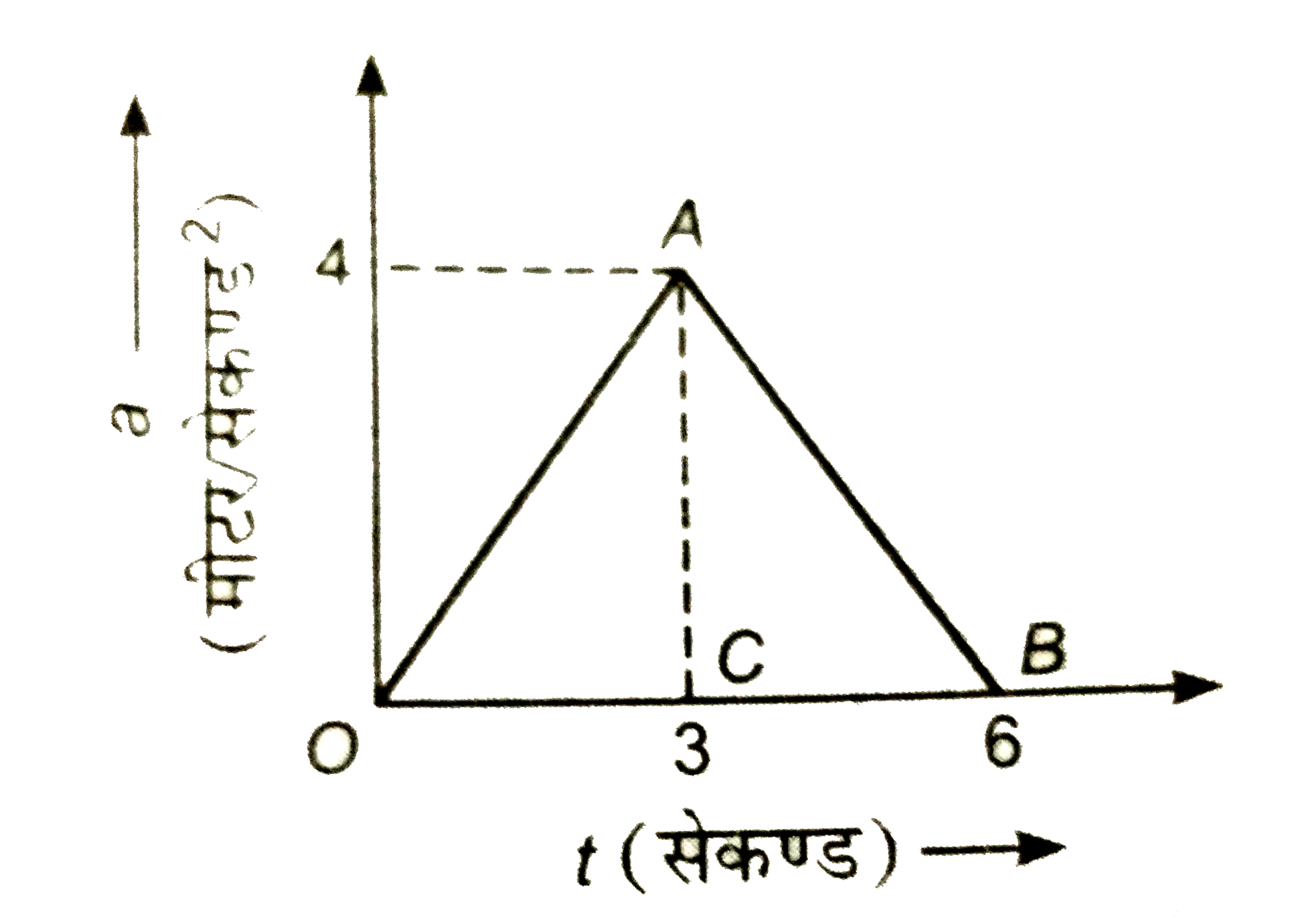A particle is moving in a straight line so that after 't' seconds its distance is 'S' (in cms) from a fixed point of the line is given be S=f(t)=8t+t3.
Find (i) the velocity at time t=2 (ii) the initial velocity (iii) acceleration at t=2 secSolution in Telugu
Step by step video & image solution for A particle is moving in a straight line so that after 't' seconds its distance is 'S' (in cms) from a fixed point of the line is given be S=f(t)=8t+t^3. Find (i) the velocity at time t=2 (ii) the initial velocity (iii) acceleration at t=2 sec by Maths experts to help you in doubts & scoring excellent marks in Class 11 exams.
Updated on:21/07/2023Topper's Solved these Questions
- MODEL PAPER 6BOOK - VGS PUBLICATION-BRILLIANTCHAPTER - MODEL PAPER 6EXERCISE - SECTION - C (III. LONG ANSWER TYPE QUESTIONS)
7 Videos
- MODEL PAPER 6BOOK - VGS PUBLICATION-BRILLIANTCHAPTER - MODEL PAPER 6EXERCISE - SECTION - A
10 Videos
- MODEL PAPER 6BOOK - VGS PUBLICATION-BRILLIANTCHAPTER - MODEL PAPER 6EXERCISE - SECTION - C
8 Videos
- MODEL PAPER 5BOOK - VGS PUBLICATION-BRILLIANTCHAPTER - MODEL PAPER 5EXERCISE - SECTION - C (Long answer type questions)
6 Videos
- MODEL PAPER 7BOOK - VGS PUBLICATION-BRILLIANTCHAPTER - MODEL PAPER 7EXERCISE - SECTION -C
8 Videos
Similar Questions
Find the circumcenter of the triangle whose vertices are (-2,3) , (2 , -1) , (4 , 0) .
View SolutionIf A={−2,−1,0,1,2}andf:A→B is a surjection defined by f(x)=x2+x+1, then find B.
View SolutionIf f:A→B is a bijective function then prove that
(i) fof−1=IB
View SolutionFind the circumcentre of the triangle whose vertices are (1,3) (-3,5) and (5,-1).
View SolutionIf f:A→B is a bijective function then prove that
(i) fof−1=IB
View SolutionA particle is moving in a straight line with initial velocity u and uniform acceleration f . If the sum of the distances travelled in t^(th) and (t + 1)^(th) seconds is 100 cm , then its velocity after t seconds, in cm//s , is.
View Solutionएक कण एक सीधी रेखा में गतिमान है। सेकण्ड बाद रेखा में दिये गये बिन्दु से इसकी दूरी मीटर में s=t33−t22−6t+5 द्वारा प्रदत्त है। तब ज्ञात कीजिए-
(i) 5 सेकण्ड बाद कण का वेग क्या होगा? था
(ii) जब कण का वेग शून्य है तब इसका त्वरण क्या होगा?
View Solutionसरल रेखा में गतिमान एक कण का त्वरण (a) समय (t) ग्राफ संलग्न चित्र में प्रदर्शित है। कण का प्रारम्भिक वेग 2 मीटर/सेकण्ड है। ज्ञात कीजिए (i) t=3 सेकण्ड तथा t=6 सेकण्ड पर कण का वेग (ii) t=0 से t=6 सेकण्ड के बीच कण का औसत त्वरण।

View SolutionThe acceleration of a particle moving along a straight line is (6t2−3t)cm/s2, at time t seconds. If the velocity of the particel at time 2 seconds be 10cm/s, find its velocity at time t seconds.
View Solutionएक कण एक सरल रेखा में इस तरह से चलता हैं ताकि इसका स्थिति t सेकेण्ड के बाद s(t)=6t−t2 हैं | इसका प्रारंभिक वेग क्या हैं।
View SolutionA particle is moving in a straight line so that after 't' seconds its distance is 'S' (in cms) from a fixed point of the line is given be S=f(t)=8t+t3.
Find (i) the velocity at time t=2 (ii) the initial velocity (iii) acceleration at t=2 sec
View SolutionA particle is moving in a straight line and its distance x cm from a fixed point on the line at any time t seconds is given by ,
x=112t4−23t3+32t2+t+15.
At what time is the velocity minimum ? Also find the minimum velocity.
View SolutionA particle is moving in a straight line so that after t seconds its distance is s (in cms) from a fixed point on the line is given by s=f(t)=8t+t3. Find the velocity at time t= 2sec (ii) the initial velocity can acceleration at t=2 sec
View SolutionA particle is moving in a straight line so that after t seconds its distance is s (in cms) from a fixed point on the line is given by s=f(t)=8t+t3. Find the velocity at time t= 2sec (ii) the initial velocity can acceleration at t=2 sec
View SolutionA particle is moving in a straight line with initial velocity u and uniform acceleration f . If the sum of the distances travelled in t^(th) and (t + 1)^(th) seconds is 100 cm , then its velocity after t seconds, in cm//s , is.
View SolutionA particle moves in a straight line such that its distance in 't' seconds from a fixed point is (6t−t2) cm. find its velocity at the end of t=2 sec.
View Solution
